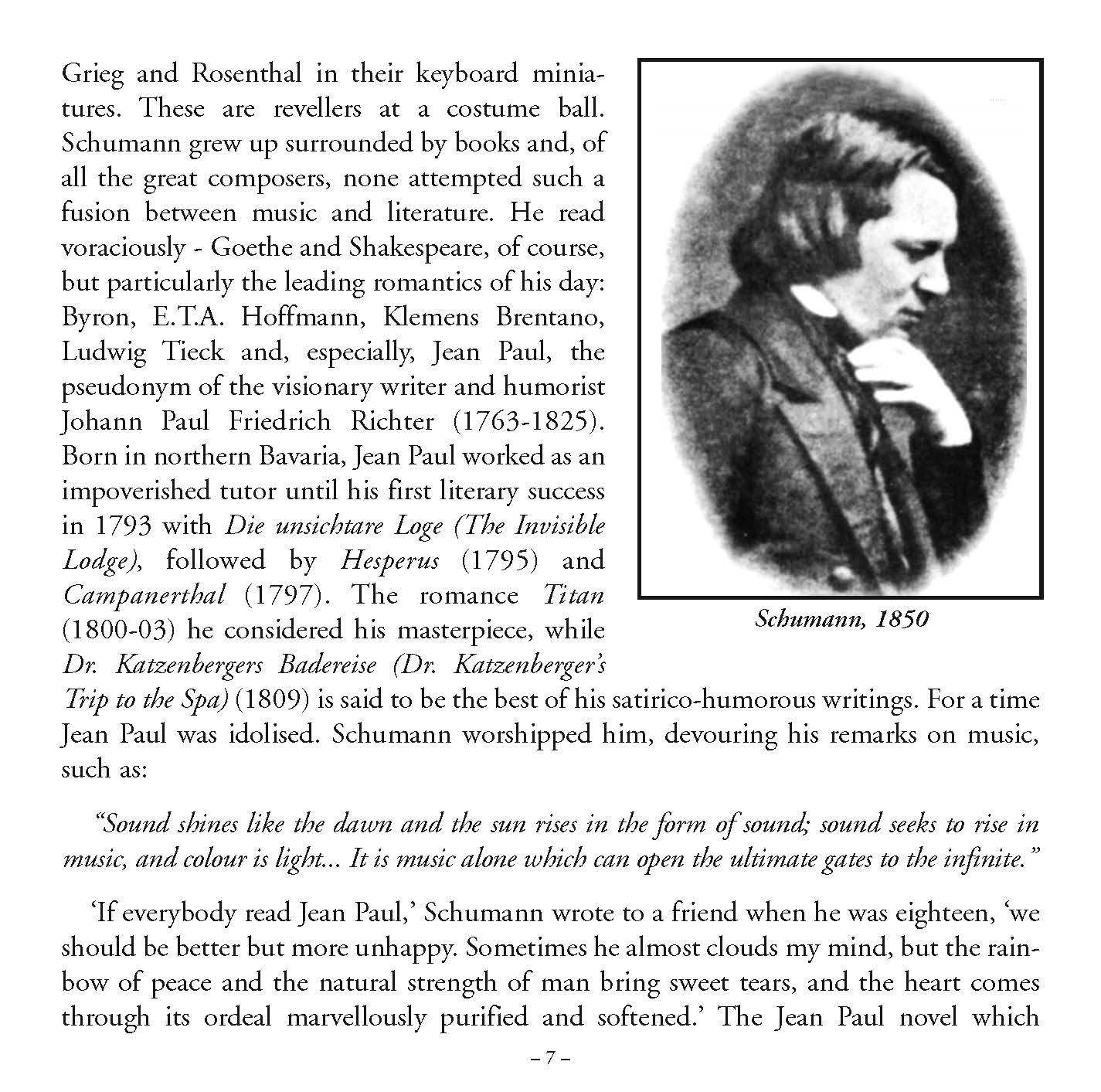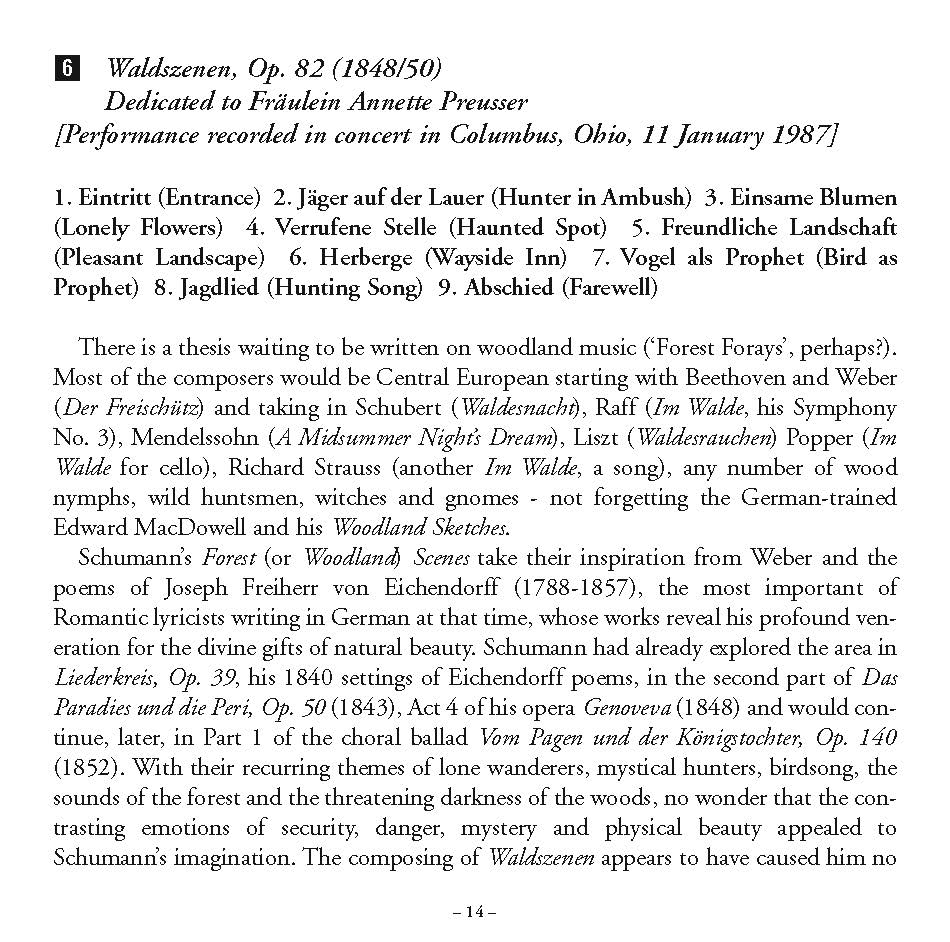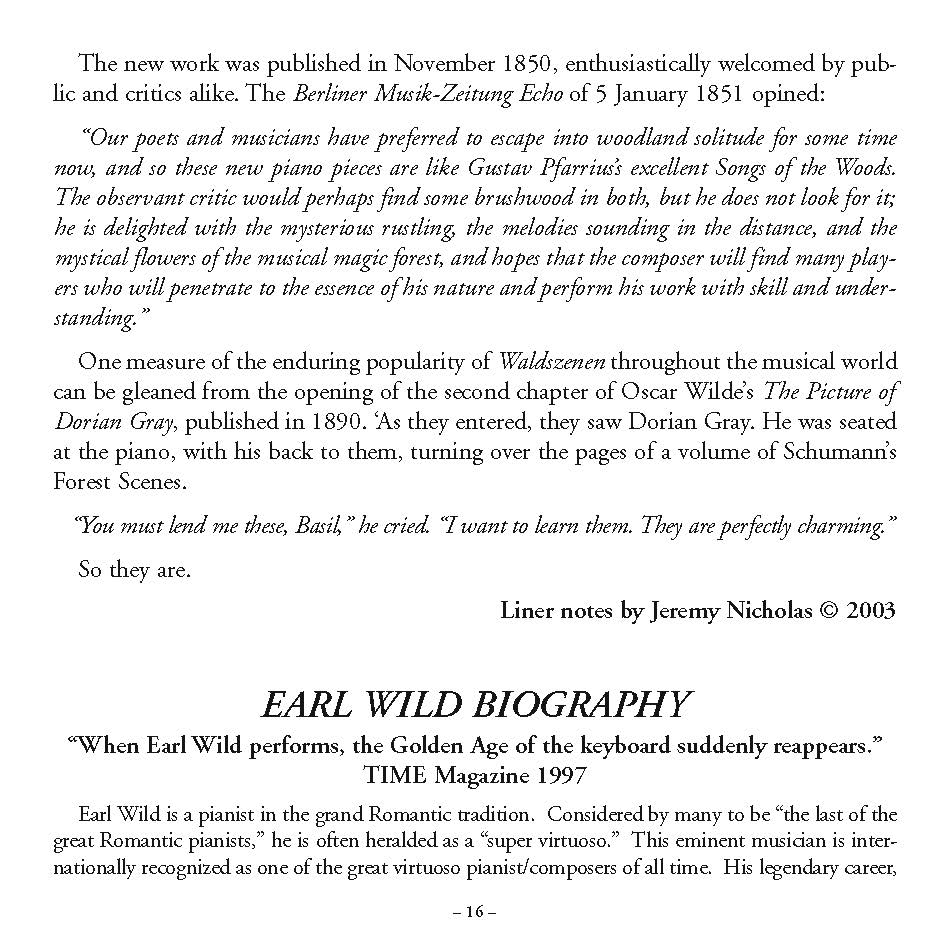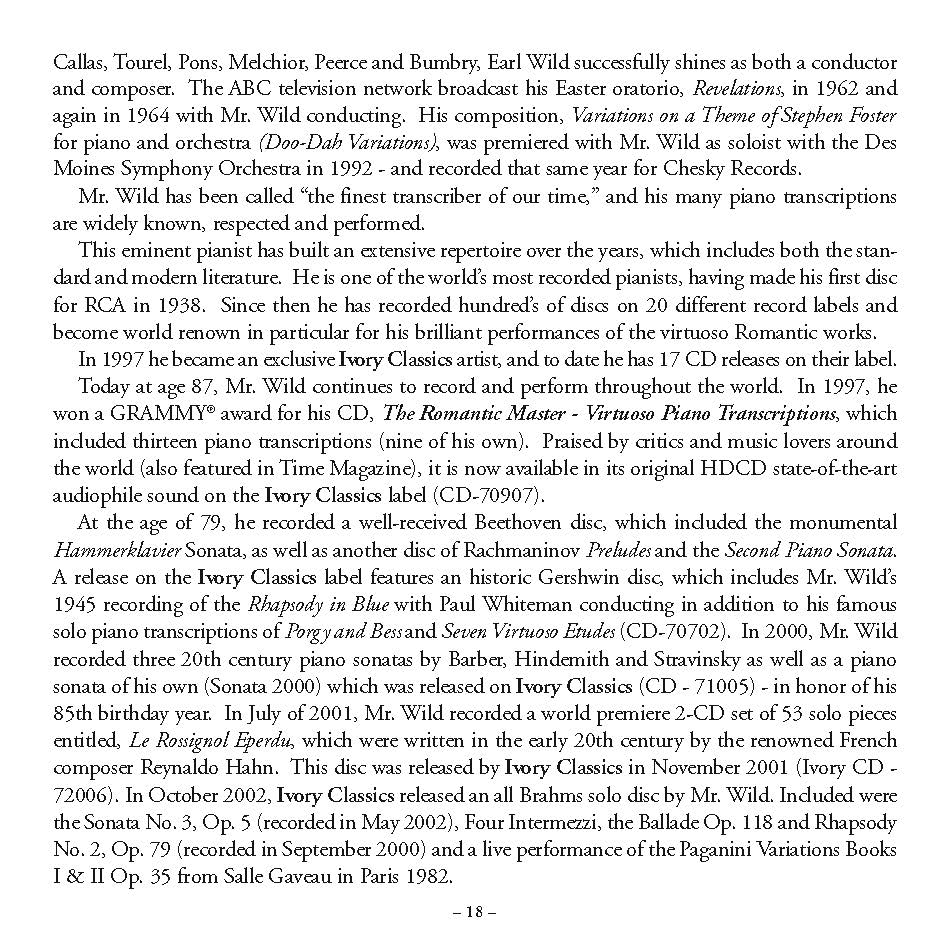Ivory Classics Music
Earl Wild - Schumann in Concert 1983 and 1987
Earl Wild - Schumann in Concert 1983 and 1987
Couldn't load pickup availability
Earl Wild's 1983 and 1987 live recordings on CD provide audiences with an authentic listening experience. Capturing the nuances of tone and tempo with precision, this collection of Schumann's piano works offers music lovers the opportunity to experience a true musical genius.
Ivory Classics CD-73001
Earl Wild - Schumann in Concert 1983 and 1987
Robert Schumann (1810-1856):
Piano: Earl Wild
Producer: Michael Rolland Davis
Engineer: Ed Thompson
Total Time: 63:48
Piano: Baldwin
The Papillons Op. 2 and Sonata No. 1 in F-sharp minor Op. 11 on this all-Schumann disc is from a Montreal recital performance on November 4th, 1983. The Waldszenen Op. 82 is from a concert in Columbus, Ohio on January 11th, 1987. Drama and elegance are in ample supply on this disc. Romanticism lives - a true throwback to the Golden Age of Pianism.
Earl Wild, the 87-year-old last Romantic Master, has always been known for his spectacular public recitals. To follow up his last Ivory Classics release (CD-72008) of a 1982 Paris performance of the Brahms Paganini Variations, Ivory Classics is beginning a series of public recital releases by this legendary Grammy Award-winning dean of pianists.
EARL WILD plays SCHUMANN In Concert (1983 & 1987) Papillons, Op. 2 Sonata No. 1 in F-sharp minor, Op. 11 Waldszenen, Op. 82 Ivory Classics CD-73001 Total Time: 63:48 (ADD)
Disc.Reviews
These are live concert recordings of Robert Schumann's Papillons (Butterflies) and Sonata No. 1 in F-sharp Minor (Montreal, 1983) and Waldszenen (Forest Scenes, Columbus, Ohio, 1987). Like the Liszt CD, this is all vintage Schumann. Knowing Schumann, you would be disappointed to hear that no problems were encountered along the way.
Have no fear. Could it be otherwise with a composer for whom mood, color, atmosphere, emotion, and literary allusion were more important than form and content? The pure creative idea came first with Schumann, and he was content to leave form and content to take care of themselves. If no existing academic form existed for a particular idea he had in mind, Schumann would invent one. A composer like this is frustrating to pianists who are trained to look for the harmonic center as the spot toward which the composer - and his interpreter - should build the piece of music, and then not find it where it was expected. Little wonder that Schumann's contemporaries often dismissed him as just a wild and crazy guy - though his influence on succeeding composers, especially Brahms, was enormous.
The butterflies in Papillons are of the human species, revelers at a ball, and Schumann paints them with deft thumbnail sketches. As often as I have heard this work, I still gasp at the stunning coup with which the composer rounds off this succession of waltzes and polonaises with the sudden, unexpected return of the first waltz in the set. Wild pulls this off superbly. And he makes as much sense as I have heard with the curious formal problems of the Sonata, which usually comes across (but not here) as a collection of four movements rather than a unified whole. The 3-minute Aria that comprises the slow movement ranks with the Traumerei from Scenes from Childhood and Des Abends (In the Evening) from Fantasy Pieces as Schumann's most perfectly beautiful miniature. How odd that the composer should follow it with a rambunctious Scherzo in which the trio section, far from being the expected point of repose that a trio ought to be, is more like a burlesque of a polonaise, danced by a heavy-footed clown with intentionally wrong accents. Earl Wild takes this moment in stride, as well.
In Wild's interpretation, Forest Scenes has a more internal coherence than the collection of picture postcards presented by lesser pianists. A problem with this work is its uneven inspiration: hauntingly beautiful tableaux in which beauty, strangeness, and terror are mixed - Hunter in Ambush, Lonely Flowers (which know all but aren't telling), Haunted Spot, The Prophet Bird - are interspersed with more the conventional trappings of German Romanticism: a pleasant landscape, a wayside inn, a hunting song. Wild gives the weaker pieces the full benefit of his technical and interpretive prowess, characterizing them as strongly as he does the bolder creations, so the work itself seems more satisfying than we might have expected
Classik Reviews, Oct. 2003
Share








































